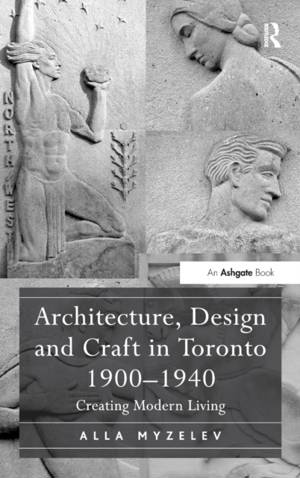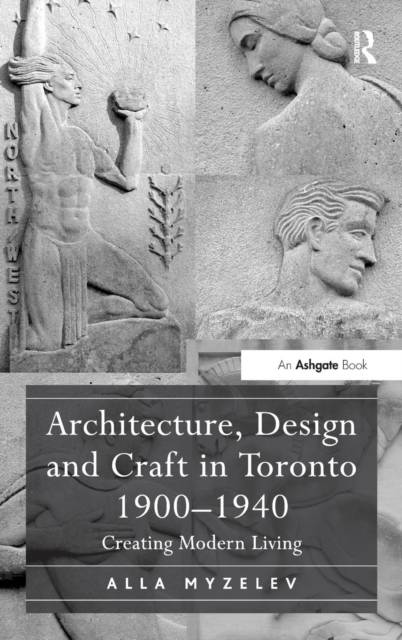
- Afhalen na 1 uur in een winkel met voorraad
- Gratis thuislevering in België vanaf € 30
- Ruim aanbod met 7 miljoen producten
- Afhalen na 1 uur in een winkel met voorraad
- Gratis thuislevering in België vanaf € 30
- Ruim aanbod met 7 miljoen producten
Zoeken
Architecture, Design and Craft in Toronto 1900-1940
Creating Modern Living
Alla Myzelev
Hardcover | Engels
€ 305,45
+ 610 punten
Omschrijving
Toronto - the largest and one of the most multicultural cities in Canada - boasts an equally interesting and diverse architectural heritage. Architecture, Design and Craft in Toronto 1900-1940 tells a story of the significant changes in domestic life in the first 40 years of the twentieth century. Adopting a multidisciplinary approach to studies of residential spaces, the author examines how questions of modernity and modern living influenced not only architectural designs but also interior furnishings, modes of transportation and ways to spend leisure time. The book discusses several case studies, some of which are known both locally and internationally (for example Casa Loma), while others such as Guild of All Arts or Sherwood have been virtually unstudied by historians of visual culture. The overall goal of the book is to put Toronto on the map of scholars of urban design and architecture and to uncover previously unknown histories of design, craft and domesticity in Toronto. This study will be of interest not only to the academic community (namely architects, designers, craftspeople and scholars of these disciplines, along with social historians), but also the general public interested in local history and/or visual culture.
Specificaties
Betrokkenen
- Auteur(s):
- Uitgeverij:
Inhoud
- Aantal bladzijden:
- 272
- Taal:
- Engels
Eigenschappen
- Productcode (EAN):
- 9781472457004
- Verschijningsdatum:
- 18/12/2015
- Uitvoering:
- Hardcover
- Formaat:
- Genaaid
- Afmetingen:
- 156 mm x 234 mm
- Gewicht:
- 557 g

Alleen bij Standaard Boekhandel
+ 610 punten op je klantenkaart van Standaard Boekhandel
Beoordelingen
We publiceren alleen reviews die voldoen aan de voorwaarden voor reviews. Bekijk onze voorwaarden voor reviews.








